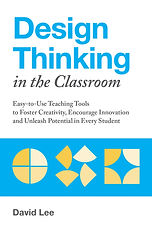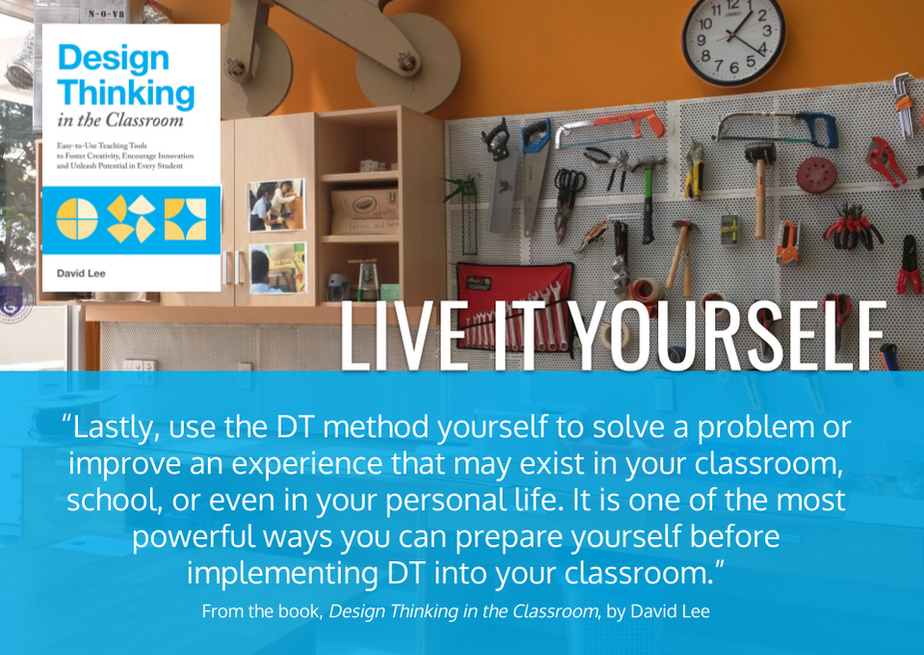DESIGN THINKING IN EDUCATION

"Design thinking is a combination of human-centered, inquiry-based scaffolding and innovation-friendly mindsets where students apply transdisciplinary knowledge/skills with creative practices to collaboratively discover empathetic insights, generate and explore radical ideas, and create, test and improve tangible outcomes; having the courage and attempting to bring meaningful change to people’s (or their own) lives, improve real world experiences, or develop solutions to complex problems."
Design thinking (DT) is an iterative methodology used to solve complex problems with a focus on human-centered design. This solution-thinking method is ideal for project-based learning and interdisciplinary education because it is a toolkit that is utilized by professionals to improve real world experiences through radical collaboration, and actionable practices and thinking that lead to innovation. This method involves a process that consists of five phases: empathize, define, ideate, prototype, and test. DT also involves a set of mindsets that students need to develop to effectively use the methodology. DT mindsets are specific attitudes that help students think and perform tasks in a creative, empathetic, and collaborative manner. In an education setting, students utilize DT to tackle real world problems or improve real world experiences for others. Educators will need to design learning experiences that focus on an authentic challenge that could possibly integrate knowledge and skills from multiple subject areas. Use this graphic organizer to design your own standards-based, design thinking project.
In the empathize phase, students gain a deep understanding of their end user(s), the person or group of people they are designing for, as well as the context of the problem. Empathy is gained through empathy work, such as interviews, observations, immersion, and research, to learn as much as they can about the context of the problem. In the define phase, students use the information they gathered from their empathy work to organize them into needs (end user’s goals) and insights (interesting and surprising information advantageous in developing a solution). The most significant needs and insights are used to develop a problem statement that could also include specified criteria for success.
Next, the ideate phase involves students brainstorming as many visual solutions as they can that could possibly solve the problem statement. They then identify the most optimal and innovative solutions to develop a tangible product or solution. Students can develop a blueprint to help them organize their ideas and make it easier to transition into the prototype phase. In the prototype phase, the students create a physical mock-up of the solution. Depending on the problem, the prototype can be a service, action plan, system, or a tangible product that end users can experience and engage in.
In the test phase, the prototypes are tested to elicit feedback and help identify failure points or difficulties that suggest elements of the design that need to be improved on. End users can provide feedback to the students on what aspects of the solution worked and what did not. This process can ignite new ideas and start the whole process over. It is important to note that the design thinking process is not linear. Students can jump from one stage to another at any point, based on what is needed at that point of the design process. For example, students in the test phase can go back to the define phase and generate a new problem statement due to new insights that were discovered during the tests. My students use the Design Thinking Digital Interactive Notebook to document their progress in developing their solution.
DESIGN THINKING QUOTES
FROM THE BOOK, DESIGN THINKING IN THE CLASSROOM
DESIGN THINKING VIDEOS
Real examples of students using DT to creatively and empathetically solve complex problems
DESIGN CHALLENGE
Here's a slide deck I created for my students that they completed during distance learning.
.jpg)






















